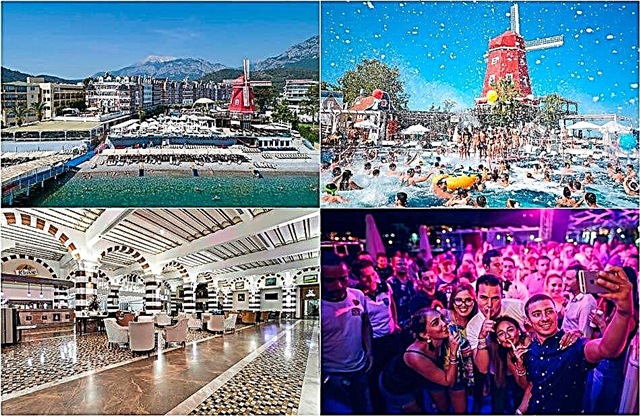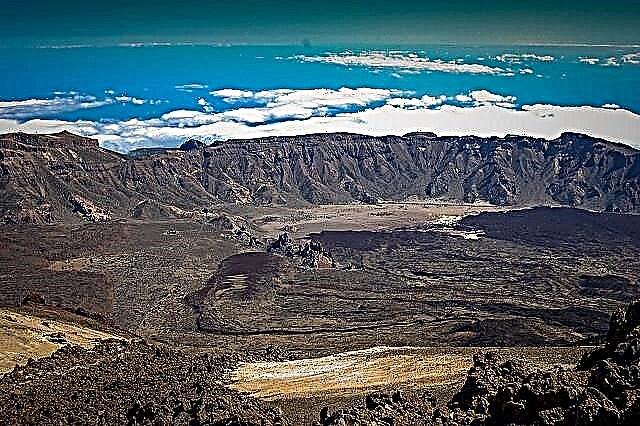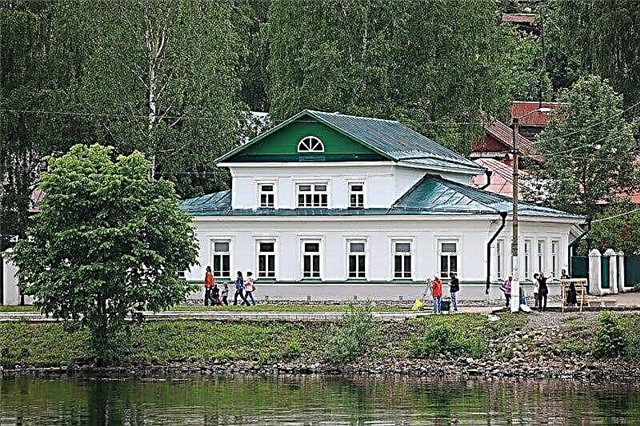The geographical location and historical background made the Ivanovo region the way tourists know it and love it. This territory remembers many key events of the country, they left their mark here. Some associations associated with Ivanovo are no longer relevant, and they are being replaced by others, no less interesting. However, there are some that still exist. These include the perception of one of the central regions of the country as a region inextricably linked with Orthodoxy. Numerous churches, monasteries and temples built in different centuries are important local attractions. In addition, there are enough museums, natural sites, memorial complexes and other things that will surely interest travelers.
The most interesting and beautiful places in the Ivanovo region
List, photos with names and descriptions of the main attractions of the region!
Plyos
The resort town is famous primarily thanks to Levitan (a personalized house-museum was opened) and other artists. There are several beaches, both related to holiday homes and independent ones. There is a ski resort with slopes for professionals and beginners, the length of the latter is more than three hundred meters. There are separate tours for children, for example, "Russian hut". Local restaurants focus on old-fashioned recipes.

House-Museum of Levitan
Opened in 1972. It occupies a two-story house: on the first one there is an exhibition of paintings by the master, as well as his friends and contemporaries, on the second one recreates the life of the 19th century. Collected personal belongings of Levitan and his memories of Plyos. It was the artist who discovered the city for landscape painters and worked here for three years, starting in 1888, spending every summer here. This period was marked by the appearance of two hundred works.

Bell tower of St. George the Victorious in Yuryevets
Built in the late classicism era. There were two churches nearby, to which the bell tower belonged. It has five tiers with a spire on the dome: the lower one also served as a temple, everything above it was a belfry. In the Soviet years, it was abandoned or used for other purposes. At the moment, it has been returned to the Russian Orthodox Church, restoration has been carried out. Belongs to the courtyard of the Nikolo-Shartomsky monastery.

Resurrection Cathedral in Shuya
Founded in 1799. The bell tower appeared 11 years later. A wooden church used to stand on this place. The clergy of the cathedral were shot at the beginning of the last century, and the cathedral was closed. At the beginning of the 90s, he returned to the property of the Russian Orthodox Church. Became a courtyard of a male monastery. The bell tower has a height of 106 meters, it stands separately, which has never been seen in Europe before, there is a massive bell on the third tier.

Asaf Islands
Located on the Volga, they form an archipelago with a length of about 4 km. The reason for their appearance was the construction of the Gorky reservoir. The five islands have a total area of 65 km². The nearest town is Yuryevets. Received the status of a nature conservation area. There are small lakes. The fauna is dominated by waterfowl, actively building nests. The area is covered with forest and sand.

Kineshma
The city was founded in 1777. The historical center of the city is the cultural and architectural heritage of the region. Here are located both private buildings that have survived from past centuries, as well as museums, old factories, religious buildings, municipal buildings, and so on. Tourists are especially interested in: "Russian hut", "Kineshemsky felt boot", Volzhsky boulevard, shopping arcade, bell tower and others.

Volzhsky Boulevard in Kineshma
Located in the central part of the city, stretches for eight hundred meters along the left bank of the Volga. The beginning is the place where Kazokha flows into the Volga, the end is the river station. In the immediate vicinity there are: "Russian hut", a cinema, the House of Nobility, the Trinity-Assumption Cathedral. They all have architectural value. Many important for the city holidays, festivals, fireworks are held on the boulevard.

Red Church in Vichuga
Construction began in 1908. During the development of the project, ideas were drawn from existing temples and bell towers. Majolica panels are the main attraction of the church. Some elements of the facade design have been lost, but most have survived. The initial decoration of the temple, including the iconostasis with gold, is also lost. Nearby there is a parable house, which is part of the ensemble.

Temple of the Icon of the Mother of God of All Who Sorrow Joy in Furmanov
Built at the turn of the XIX-XX centuries. Architectural Russian style and eclecticism prevail. Refers to the number of five-headed. The color of the walls is red as the main material is brick. The iconostasis has been preserved since the time of its construction; it is marble and unique for the central region of the country. The existing church was returned to the Russian Orthodox Church even before the collapse of the Union, thanks to the efforts of local activists.

Old Resurrection Church in the village of Bonyachki
Founded in 1904. Gradually, a parable house, a library, an almshouse and other buildings appeared nearby. After the desolation that prevailed in the church during the Soviet period, restoration began. The superstructure on the second floor was dismantled, the area was re-consecrated, and the divine services began again in 1992. Later, the white-stone facade was renewed. The bell tower has three tiers. The latter has survived only partially.

Holy Cross Church in Palekh
Built in the second half of the 18th century. The architecture of the building is dominated by features of the Russian Baroque. Windows and ornaments are borrowed from other directions. The original paintings were replaced by those made in the 19th century, but they were also updated more than once. The iconostasis combines styles; it includes both old icons and new ones. The most valuable of them in the historical and cultural context is "Savior in Strength".

Historical and Art Museum in Shuya
Founded in 1925. At the end of the 30s, the exhibits were located in the Epiphany Church. Before the collapse of the Soviet Union, the collection began to constantly move, as it lost its main building. The second opening took place in 1999 in a merchant's house, which has become a permanent home for the museum. Four halls tell the history of the region through ancient manuscripts, household items of several centuries, photographs, etc.

Museum of Ivanovsky chintz
Founded in 1987. It is part of the local history museum. The main theme is chintz and fashion. Located in the mansion of the manufacturer Burylin. The exhibits he collected form the basis of the museum collection: homespun towels, material samples, interesting calico crafts, and more. Additionally, there is an exhibition hall and a library with an archive; they are moved into a separate courtyard building - a former coach shed.

Museum of Palekh Art
Founded in 1935. The folk craft of the village of Palekh is mostly associated with painting. Miniatures, icons. It is these items that make up the collection of the museum. Since the old building contained only a tenth of the funds, it was necessary to move in 2014. Not only works by local artists are exhibited, but also by foreigners who worked in a similar style. There is an archive with rare books.

Valenok Museum in Kineshma
Opened in 2012. It is a private collection: organized by the Sokolov family, who have been making felt boots for two decades. More than two hundred exhibits are presented: the smallest felt boots in the world, giant felt boots, painted specimens, unusual in shape and classic. The excursion tour will allow you to get acquainted with the history of the boots. It is possible to order shoes.

Andrei Tarkovsky Museum in Yuryevets
Opened in 1996. It is located in the house where the director lived during the war: he was sent here with his mother and sister during the evacuation. The main part of the exposition is Tarkovsky's archive, specially purchased at an auction.There is a small cozy cinema hall where you can watch any of the films of the cinematographer. There is a library with books by Father Andrei Arsenievich, with publications about the master himself.

Rubskoe lake
It is located in the Teikovsky district. The area is 3 km². The average depth is about 5 meters. The Smerdyaga flows through it. Ice appears at the end of November. It usually disappears completely by mid-April. In the coldest months, the thickness of the ice cover is about 75 cm. High mineralization, not yet used in treatment. There are recreation centers and children's camps on the coast and near the lake.

Holy lake
Located in the Yuzhsky district. The area is 2.7 km². The average depth is about 4 meters, there are no big drops. It has an oval shape and is rich in fish. One of the variants of the origin of the name - the lake appeared on the site of a well dug by the elder. Attractions nearby: Svyatoozerskaya Iverskaya hermitage and Mugreevsky burial mound. The district has swamps, peat fields, pine and mixed forests.

Nikolo-Shartomsky monastery
Founded in the XIII or XIV century. During the Soviet period, buildings fell into disrepair. After the return of the territory to the ownership of the ROC, restoration work began. The monastery is home to about a hundred people. They are engaged in spiritual education, construction and agriculture. Nikolsky Cathedral is the center of the architectural ensemble and the oldest surviving building of the male monastery.

Dunilovo
The village is famous for its religious buildings. Earlier there were even more churches, but eleven have survived to this day. Annunciation was built in the 17th century and originally belonged to the monastery. A century and a half later, a bell tower appeared. Now the center of the Orthodox life in the village is the Holy Dormition Convent (formerly for men). His courtyard is vast, and many pilgrims come.

Nikolo-Tikhonov monastery in Timiryazevo
Founded in 1498. The main icon of the monastery is "Sovereign"; it is regularly taken out to religious processions. Another value is the "Invincible" icon, which is considered to be miraculous. Since the 30s, it was plundered, relics were chopped up with axes, a machine and tractor station was located in the building for a long time. Now it again acts as a monastery with a wide courtyard.

Vvedensky monastery in Ivanovo
Founded in 1991. Its main church is an architectural monument of the last century. She went through difficult periods, but now she is again acting in accordance with the initial functions. A nunnery was formed around the church. The relics and particles of relics, martyrs and saints are kept here. The nuns are active in the social sphere: they visit colonies, help the sick, and conduct educational work. There is a small publishing house in the monastery.

Ivanovo Regional Art Museum
Founded in 1959. After reconstruction, the sculptures "Lyubava" and "Ariadne" appeared in front of the entrance. The exposition is a wide collection of works of art, practically unlimited in terms of periods, countries and styles. The collection consists of forty thousand copies of various values: the ancient world, ancient Russian art, engraving, icon painting.

Embankment Take away in Ivanovo
Popular walking area. For entertainment - feeding ducks. Some time ago, the embankment was somewhat modernized and the shore was strengthened. The main walking area stretches between two bridges: Sokovsky and Teatralny. There are several factories, builders' park, a large park, a circus and more nearby. Since the embankment is in the center, it is convenient to get to any attraction from here.

Shchudrovskaya tent
A unique example of 17th century stone civil architecture. It is believed that there are no analogues in the neighboring regions. It has been under protection as a valuable building since the 1920s. A small building can make it inconspicuous to uninitiated tourists. White walls, small windows, a tiny neat porch and a black roof. However, simplicity hides different types of complexity and nuances that are so appreciated by historians.

Memorial complex Krasnaya Talka
Opened in 1975. Located on the left bank of the Talka. The complex was created in memory of local workers who participated in the revolutionary movement, as well as in honor of the creation of the first council of workers' deputies. The ensemble consists of the following elements: a decorated entrance to the park, a memorial sign at the place of Afanasyev's death, an obelisk in front of which an eternal flame, an alley of heroes - participants in the revolution.

Ivanovo State Circus
It started its work in 1933. In the year of its fiftieth anniversary, it received a new building. In 2014, a major reconstruction took place. At the time of creation, it was the largest in the Union. A typical performance by a regular troupe lasts about 2.5 hours with one intermission. The modern building is also used for other show programs, tours of circus groups, concerts.

House-ship
Built in the 30s of the last century. A very bulky and massive looking building. One end is made in the form of a ship's bow, there is also an observation tower. The house is an example of constructivism. It was intended for workers and is used as a normal residential building. Consists of two buildings, there are 212 apartments with rather spacious bathrooms and kitchens, which is not typical of Soviet architecture.

Farm "Shartom Ostrich"
Located in the village of Vvedenie. Emus and African ostriches are bred here. The territory is completely fenced and adapted for household needs. Nearby is the Nikolo-Shartomsky monastery. Possible, as individual visits, accompanied by workers, and group visits of 15 people with a guide. It is allowed to feed the birds with specially given food. You can buy eggs, feathers and meat products.

Gavrilovo-Posad stud farm
Located on the outskirts of the city. The main breed is the Vladimir heavy trucks. The stables are interconnected and form an almost continuous chain. The technical equipment is outdated, but the working methods remain unchanged and efficient. There is a dovecote and additional buildings. Closed in 2013 pending the emergence of investors interested in developing the project.











